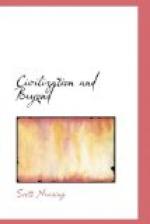The bourgeois revolution from 1750 to 1840 centered largely in West Europe and the Americas. In scope it was economic, political, cultural. The Chinese and other revolutions of the present period, beginning with the Mexican Revolution of 1910 and the Chinese Revolution of 1911, are once more transforming the economic, political and cultural life of mankind.
UNESCO’s History of Mankind (Harper and Row), particularly its Volume 6 titled The Twentieth Century, presents voluminous comments from a wide range of qualified scientists and commentators on the changes associated with the great revolution of 1750-1970.
The economic, political and cultural life of the majority of human beings has been modified by the events comprising the great revolution. Its influence has been, and continues to be, planet-wide. Consciously or unconsciously, human beings have been brought into contact with influences that are transforming them as they revolutionize human society.
Western man and his way of life have been primarily responsible for this great revolution. The changes brought about in the human life pattern in the course of the great revolution have created a new world—in structure, in function, in outlook, in stepped-up capacity for even more spectacular changes in the future.
Instead of regarding human beings and human society as unchangeable and sacred we must regard both as a part of our social problem: taking the steps necessary to reach and occupy the highest possible levels of social and individual health and effectiveness. We can and should make every effort to improve human society. We should be equally concerned to improve man and his nature.
CHAPTER NINETEEN
MAN COULD BREAK OUT OF THE AGE-LONG PRISON HOUSE OF CIVILIZATION AND ENTER A NEW WORLD
We humans have been living for ages with various lifestyles—as hunters and fishermen, as herdsmen, as cultivators of the soil, as craftsmen, as traders and merchants, as professionals, as exploiters, as parasites, wreckers and plunderers. On the whole, our energies have been spent in relatively small, self-sufficient groups, staying close to nature, as a part of nature.
Occasionally we have turned from this “natural” way of life, to build towns and cities, experimenting with large scale mass enterprises and expanded aggregates of population, wealth and centralized authority to which we have given the name of civilizations.
These civilizations, in their turn, have passed through a recognizable life cycle—the cycle of growing, developing, maturing, aging, breaking up and disappearing. One aspect of their civilized life was the keeping of records. Another aspect was building with baked clay and stone. Baked clay, some metals and stone, have withstood the wear and tear of time, sheltered in the temples and tombs which we are uncovering, deciphering, translating.




